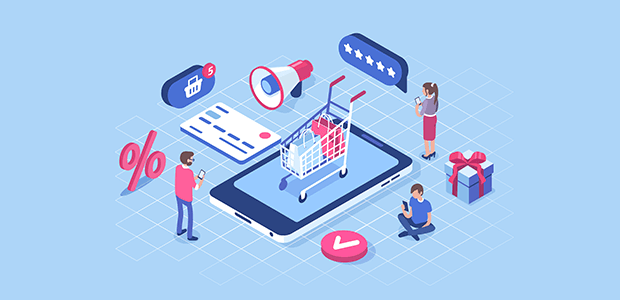Do you want to know how to increase Shopify sales?
After all, it’s not enough to just build a Shopify store and wait for customers to buy from you. There’s too much competition for that to be realistic.
Fortunately, there are some easy ways to actively increase Shopify sales. Many of these strategies cost very little or even no money at all.
In this article, we’ll show you how to increase Shopify sales based on a few simple principles.
Let’s get started!
Why Is My Shopify Store Not Selling Enough?
Before you can think about how to increase Shopify sales, you have to understand why you’re not making those sales in the first place. Otherwise, you may waste energy and resources trying to fix something that is already working, or throwing the wrong solution at the problem.
The 3 factors that contribute to your sales rates are:
- Traffic: the number of people who visit your Shopify site
- Conversions: the number of visitors who actually buy something from your Shopify store
- Order value: how much each customer purchases in each transaction
There are other conversions that may happen before the sale, such as joining your email list, adding an item to cart, or clicking on the checkout button. For this overview, we’ll focus on sales or transactions as the conversion we want to increase.
You have to pay attention to all 3 factors in order to increase your overall sales. If you focus only on getting your conversion rate up to 25%, but you only have 4 visitors to your site every month, that’s still only one sale. And if that single sale is a low-value purchase, your total revenue remains low.
On the other hand, if you pump lots of money into ads to grow your traffic to 5,000 visits per month, but your conversion rate and order value are low, only a few of those 5,000 will buy anything. Your ad money will be wasted.
Let’s look at some specific reasons why your eCommerce business may not be doing so well.
Why Is My Shopify Store Not Getting Traffic?
There can be many reasons your Shopify store isn’t getting enough traffic.
For starters, if you’re a new shop, it simply takes time for search engines to index your site and for your brand to get established. There’s no such thing as an overnight success. Even the brands that appear to come out of nowhere have a lot of planning and hard work behind the splashy launch.
Another simple reason is that your brand awareness is low. You aren’t talking about your shop enough, and no one else is either. If you aren’t showing up on page 1 of Google, chances are you won’t just get discovered by shoppers searching for your product. You need to promote and market your Shopify store.
A big part of building a buzzworthy eCommerce brand is standing out. The marketplace is very crowded, so you need to be unique and memorable. Generic branding, product images, and copy simply isn’t enough.
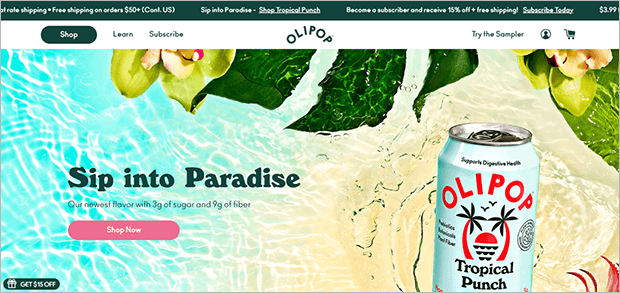
An important part of branding is identifying your niche. Who will be most drawn to your brand and products, and why will they choose you over your competitors? If you can’t answer these questions, chances are your Shopify site isn’t making a deep enough impression for visitors to come back or tell their friends about you.
Traffic-building is a long game, but that doesn’t mean you should ignore it. There are many ways to boost traffic, from influencer marketing to Google ads to retargeting campaigns. In this article, we’ll focus more on the second reason for poor sales: low conversion rates.
Why Do I Have Traffic But No Sales in Shopify?
Let’s say that you have a good amount of traffic but no sales on your Shopify site. In this case, you need to look at conversion rate optimization. Fortunately, that’s our area of expertise!
There are many reasons potential customers don’t convert on your site, such as:
- Lack of trust: They don’t know who you are and aren’t sure you’ll deliver what you promise
- Bad mobile experience: Many online shoppers use mobile devices, so if you’re site isn’t optimized for mobile, they’re much more likely to leave quickly
- Poor navigation and user experience: They can’t find the products or information they’re looking for
- Uninviting product descriptions and images: The products don’t look compelling
- Audience-messaging mismatch: Your marketing is bringing in the wrong audience that isn’t interested in your products
In the next section, we’ll offer some quick, cost-effective tips to address these reasons and improve your Shopify conversion rate.
How Do I Get More Sales on Shopify? (2022)
To get more sales on Shopify, you can improve the factors that contribute to sales:
- Bring in more traffic
- Improve your conversion rates
- Increase average order value
- Boost lifetime value
You’ll notice that this is the same list of factors we discussed earlier, with one addition: lifetime value. Lifetime value (LTV) is an estimate of how much revenue a customer will generate across all their purchases from you. LTV is based on an important assumption: that the customer will buy from you more than once.
It’s nearly always easier to convince an existing customer to buy from you again than it is to persuade a brand new customer to buy from you for the first time. So we’ll dedicate the last part of this list to strategies for customer retention.
But first, some tips for getting more sales from new and returning customers alike.
1. Improve Your Shopify SEO
Search traffic can be free or pretty close to free. Visitors who come in from search often have very high intent to buy. But to take advantage of search traffic, you’ll need to improve your search engine optimization (SEO). Here are some quick tips you can use to improve your Shopify SEO now:
- Create unique page and product titles and write a meta description for each page or product
- Use descriptive keywords in your product titles, descriptions, and URLs
- Write Shopify blog posts that target the relevant keywords
- Make sure your product images are high quality but also compressed for quick loading
- Add a sitemap to Google Search Console
- Install Google Analytics to keep track of your traffic and look for improvement opportunities
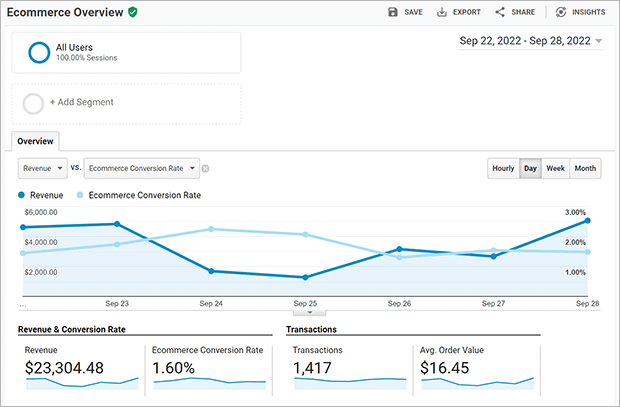
2. Sell on Other Platforms
While Shopify gives you complete control and ownership over your online store, you lose out on the discoverability of being in a marketplace like Etsy or even Amazon.
But you can use special Shopify apps to create shoppable posts on social media platforms like Pinterest, Instagram, or Facebook. This gives you access to a much larger audience. And like search traffic, many users on these platforms are searching for solutions and inspirations. Your brand can provide that for them!
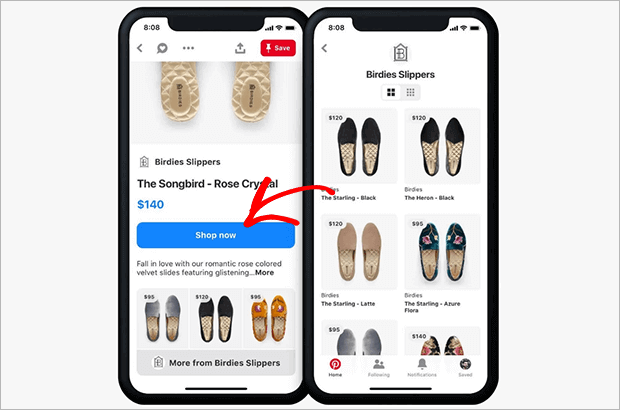
3. Leverage Referral and Affiliate Marketing
Another way to get more traffic is to have other people, preferably your customers, do the marketing for you. This is where referral and affiliate marketing comes in.
Referral marketing is when an existing customer tells their friends and acquaintances about your store and products. In return, you give them a reward when their friends purchase from you. You only have to pay out when you make a sale, which can make referral marketing highly cost effective.
In general, referral leads cost less to acquire and have greater LTV than leads coming in through advertising, content marketing, or other marketing strategies. That’s because of the social proof provided in the referral process. The new customer hears how good your products are from someone they already know, like, and trust.
For more information, check out this ultimate guide to referral marketing. Also, explore these 10 Affiliate Marketing Tips to Increase Your Income.
4. Keep Shoppers On Your Shopify Site
Once you’ve done all the hard work of building traffic, don’t lose all those new visitors to easily preventable problems!
Most site visitors decide within seconds whether they’re going to stay on a web page or leave. So make sure your homepage and product pages are:
- Easy to navigate
- Optimized for mobile
- Consistently branded
- Quick loading
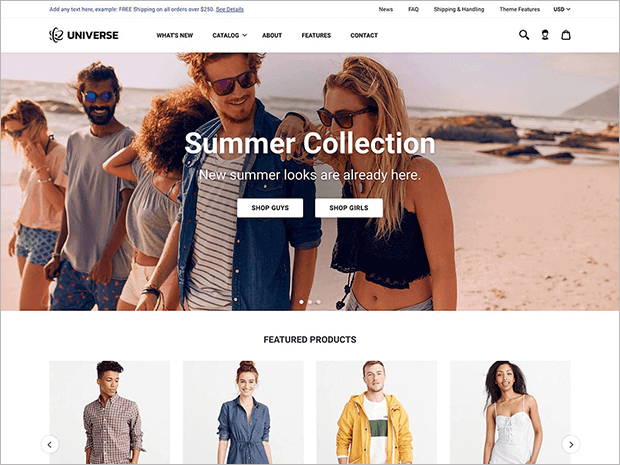
Remember, the most eye-catching branding or sparkling copy won’t work if the wrong audience is seeing it. One important reason shoppers will leave your site is if they don’t relate to the words and images that describe the products.
For example, if you’re selling a product to older shoppers, they might be turned off by lots of trendy slang in your copy. If you sell clothing, a shopper who doesn’t see any models that look like them may have a hard time picturing themselves wearing your clothes.
So in addition to making your site easy to use, make sure you’re reaching your target audience with the right messaging. You may consider making separate landing pages for different audience segments and driving email, ad, or search traffic to the appropriate pages.
5. Optimize Product Pages
Your product pages make up the majority of the pages on your Shopify site, so don’t leave them to chance.
Make sure to use high-quality product images. Show different variations and multiple angles when you can, and show off the details. You can also add videos and 3D models for even more detail.
A picture may be worth a thousand words, but the words in your product description are still important. List the features in detail, but also explain how the product benefits the visitor. The product description is also a great opportunity to paint a verbal picture of how their life will be better with the product.
You also need to have a clear call to action (CTA) inviting browsers to purchase the product. The product page below is a great example.
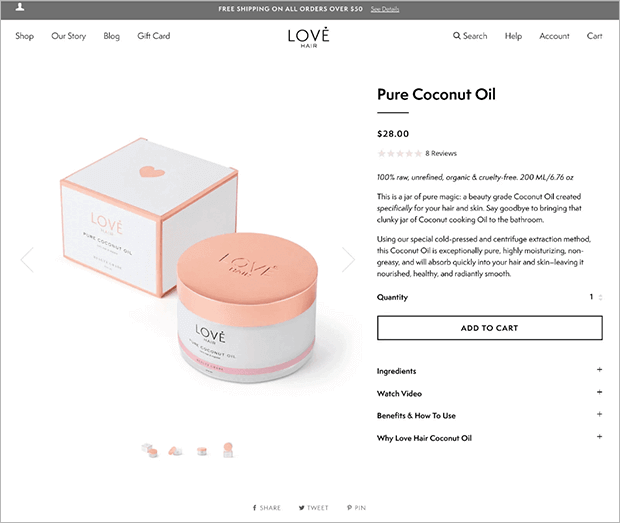
6. Build Trust With Social Proof
Social proof is the human tendency to view what others are doing as a good thing that’s worth imitating. If you saw that hundreds of people bought and liked a product, you’d be more likely to assume that product was worth buying than if no one had ever bought it before.
Whenever you can, get customer reviews for your products. You can display these on the product pages and throughout your Shopify site. With permission, include the customer’s name and picture.
You can also add social share buttons that indicate how often a product has been liked or shared. This is another indicator of how popular a product is.
Another way retailers can show social proof is to display a real time feed of purchases. TrustPulse makes it easy to show small but persuasive notifications when someone buys an item or takes other actions on your site. This is especially effective if you can show other people buying the same item that a customer is currently looking at. Learn how to add a live sales notification to your Shopify site.

7. Create Urgency and Scarcity
Many customers who abandon carts or checkouts don’t come back later to finish their purchase. So you want to motivate them to complete their purchase now while they’re thinking about it.
There are several ways to create this sense of urgency. You can use TrustPulse to show OnFire notifications about how many people have purchased a particular item in a certain time period. This suggests to buyers that the product is popular and may sell out.
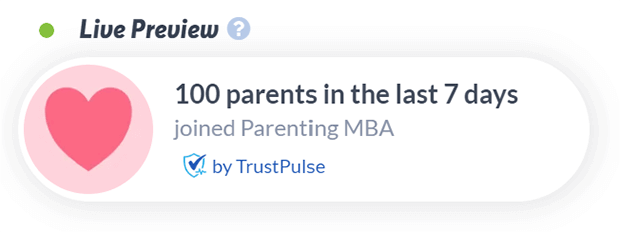
Another method is to offer a limited-use discount code. A Shopify app like OptinMonster can display a countdown timer that drives shoppers to check out now and take advantage of the discount.
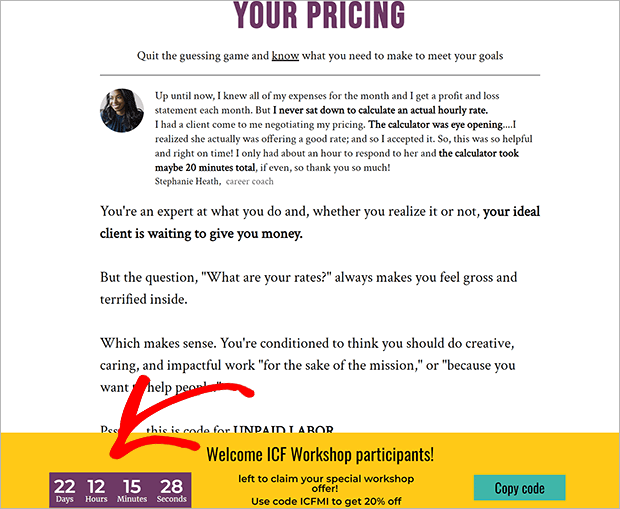
Finally, you can create special waitlists for restocks or new product launches. Even if a customer can’t purchase the item right now, having a waitlist suggests that the product is highly desirable and stokes their fear of missing out. So when the product is available, they’ll be more likely to buy.

It can be easy to overdo urgency or scarcity marketing tactics, so be sure to A/B test any copy that depends on these psychological tricks to see what’s actually working.
8. Reduce Shopping Cart Abandonment
Checkout is another critical point where you may lose shoppers. Don’t let all your optimization and marketing efforts be lost to abandoned carts and checkouts!
Cart abandonment is a serious problem for all eCommerce store owners, but here are some easy ways to prevent Shopify cart abandonment:
- Be clear and upfront about all costs, including shipping, taxes, and fees
- Simplify the checkout process as much as possible
- Offer flexible payment options
- Reassure hesitant shoppers at checkout about your return policy, shipping times, and other details
- Tempt abandoning visitors with exit-intent popups offering discounts, free shipping, and other goodies
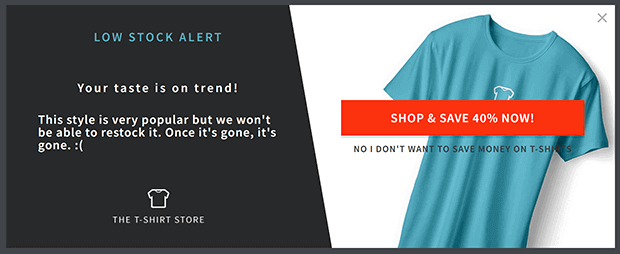
9. Recommend Products
As promised, we’ve included several strategies aimed at increasing order value and lifetime value. These also tend to be good at converting first-time buyers as well!
One easy way to boost your orders is to recommend products. This helps relieve decision fatigue, which makes people less likely to buy. Decision fatigue is when people get mentally tired after making many decisions in a row. They start making poor choices or avoiding decision-making entirely. In eCommerce, this might mean they leave your site without purchasing something they actually want.
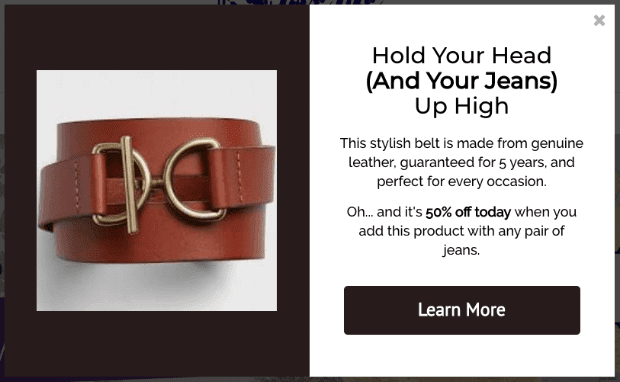
You can make recommendations based on your understanding of your customers. This can ease the burden of purchasing decisions. There are several types of product recommendations you can make:
- Upsell: Recommend a more expensive product or additional products to help them get the best customer experience.
- Downsell: Recommend a lower priced product if cost is an issue. Making a smaller sale is better than making no sale at all!
- Cross-sell: Recommend products that coordinate with or complement the item they’re viewing or have added to their cart.
To learn more about upselling and cross-selling, read What Is the Difference Between Upselling and Cross-Selling?
You make these recommendations on product pages or on the checkout page. Or use a popup to direct customers toward the best products for their need. Check out our picks for Shopify personalized recommendation apps.
10. Set Order Minimums for Discounts
Another simple strategy for increasing order value is to offer discounts, but only for orders that reach a minimum value. Many shoppers are motivated by the perception of saving money, so they’re actually willing to spend more in order to unlock free shipping or a discount on their entire order.
You can also offer a free gift, upgrade, or buy one get one discount with a minimum order value. Because you’re only paying for those addons with larger orders, your profit margins will stay healthy.
11. Use Price Anchoring
Price anchoring is a way to provide customers with a point of reference when it comes to your product prices. When they have a better context for your prices, they’re more likely to purchase.
One way to use price anchoring is to show the highest priced item first. Then other similar items may seem like a better bargain by comparison. The risk of doing this is that customers won’t look past the first item if they think they can’t afford it.
Another way is to surround the highest priced item with lower priced products. The last product should be similar in price to the first, but slightly higher. Shoppers will see the first, lower priced item as the price anchor. The next highest priced item will look comparatively higher, but then the final product will both look lower in price and reinforce the price of the anchor product. This takes advantage of recency bias, or the tendency to remember the last item more clearly than the first.
12. Start a Customer Loyalty Program
Now we’ll go over some tips for increasing the lifetime value of each customer. Again, these strategies also work for converting first-time buyers or boosting individual order value.
Customer loyalty programs can be strong motivators for repeat purchases. You can offer tiered discounts, store credit, or other rewards to repeat customers. The more they buy, the more rewards they earn. You can also send thank-you gifts for leaving product reviews or sending referrals.
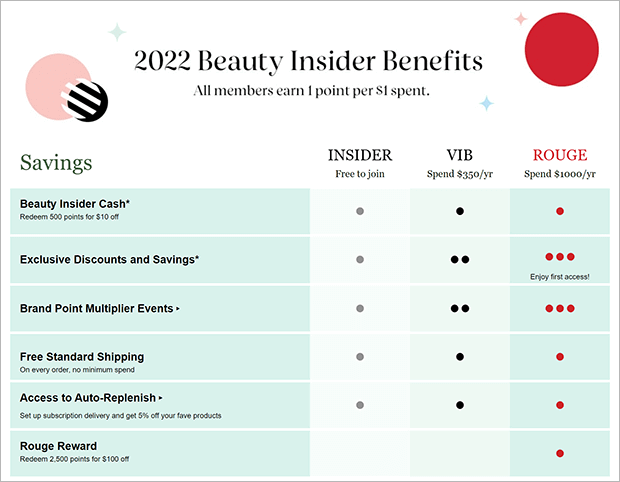
13. Grow Your Email Marketing List
Finally, we get to our favorite time-tested eCommerce marketing strategy of all: email marketing.
Email marketing is the very best way to bring both loyal customers and casual visitors back to your Shopify store. It’s a direct line of communication, and you can target customers with highly personalized messages based on their shopping or browsing behavior.
Once you have an email list, you can send email marketing campaigns to promote sales, recover abandoned carts, win back past customers, and more. Welcome emails and abandoned cart emails can have very high conversion rates, so it’s worth your while to set those up.
OptinMonster makes it easy to add all kinds of email signup forms to help you grow your Shopify email list.
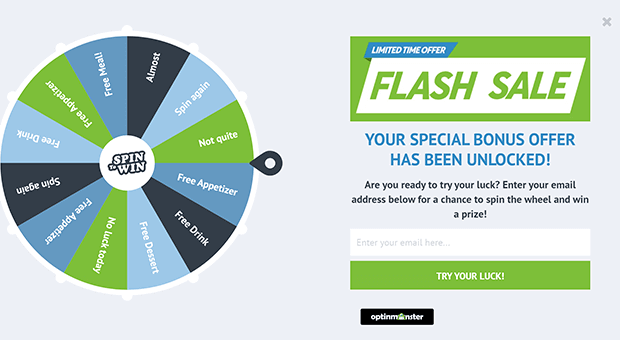
We hope you liked these low-cost tips for how to increase Shopify sales.
Next, check out this complete list of the best Shopify apps to increase sales. You can use these marketing tools to implement many of the strategies we discussed today, and they’re all available in the Shopify App Store.
Ready to start showing social proof to drive your Shopify sales? Get started with TrustPulse today!
If you like this article, please follow us on Facebook and Twitter for more free articles.
